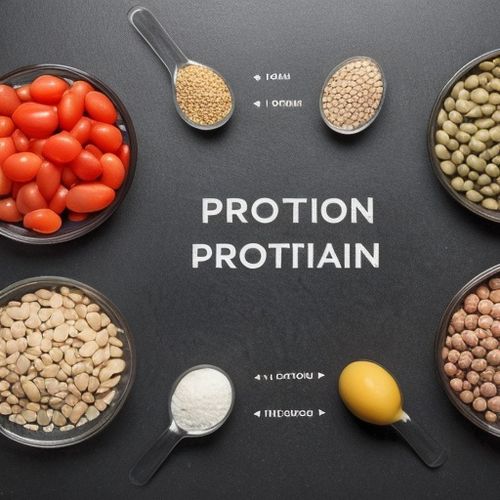In an era where chronic diseases are increasingly prevalent, the quest for healthy aging has become a focal point for researchers and health enthusiasts alike. A recent study published in the journal Nature Medicine, led by scientists from the Harvard T.H. Chan School of Public Health, offers valuable insights into the role of diet in achieving a disease-free life well into old age. By following over 100,000 Americans in their 40s, 50s, and 60s for up to three decades, the study provides compelling evidence that healthy diets earlier in life are associated with a higher likelihood of healthy aging. But what does this mean for individuals at different stages of life, and how can these findings influence nutrition choices?
Understanding the Study and Its Implications
The study, which spanned up to three decades, tracked the eating habits of participants who documented their food consumption over long periods. The researchers classified the diets based on adherence to eight types of healthy eating patterns and compared these with the consumption of unhealthy ultraprocessed foods. The results were striking: only about 9.3% of participants achieved what the study defined as healthy aging—reaching 70 years old without chronic diseases like diabetes, hypertension, or heart disease, and without cognitive, physical, or mental health impairments.
Dr. Leana Wen, an emergency physician and adjunct associate professor at George Washington University, emphasized the significance of the study. “This was a sound study that demonstrates quite convincingly that following a healthy diet earlier in life is a key factor involved in healthy aging,” she said. The findings align with other research showing that diets rich in vegetables, fruits, whole grains, and nuts can extend life expectancy and improve overall health.
The Eight Healthy Diets Examined
The study did not ask participants to identify which diet they were following but instead analyzed their food consumption patterns against eight established healthy diets. These included:
1. Alternative Healthy Eating Index (AHEI)
2. Alternative Mediterranean Index (aMED)
3. Dietary Approaches to Stop Hypertension (DASH)
4. Mediterranean-DASH Intervention for Neurodegenerative Delay (MIND)
5. Healthful Plant-Based Diet (hPDI)
6. Planetary Health Diet Index (PHDI)
7. Empirically Inflammatory Dietary Pattern (EDIP)
8. Empirical Dietary Index for Hyperinsulinemia (EDIH)
These diets share commonalities, such as emphasizing plant-based foods, lean proteins, and healthy fats. For instance, the aMED and MIND diets are based on the Mediterranean diet, which is rich in fruits, vegetables, nuts, and legumes. The DASH diet focuses on reducing sodium intake, while the EDIP diet uses an inflammatory index for foods. Each diet offers unique benefits, but all promote overall health and longevity.
Practical Implications for Midlife and Beyond
The study’s findings should prompt individuals, especially those in midlife, to prioritize nutrition as a cornerstone of healthy aging. Dr. Wen advised aiming for whole foods that are minimally processed, such as leafy green vegetables, fresh fruits, and whole grains. Nuts, legumes, fish, and lean meats are also beneficial. Conversely, highly processed meats and foods high in sodium and trans fats should be minimized.
“Everyone can make a conscious effort to reduce their consumption of sodas, fruit drinks, and other sugar-sweetened beverages,” Wen said. “They can also try to cut their consumption of ultraprocessed food, which has been linked in numerous other studies to higher risk of mortality.” Reading food labels is a practical way to assess whether a food is ultraprocessed and to identify levels of sodium and trans fats.
The Importance of Healthy Habits at Any Age
While the study focused on individuals in their 40s, 50s, and 60s, the implications extend to younger individuals as well. “It’s never too late to start developing healthier habits,” Wen emphasized. Other studies have shown that adopting a healthy diet at any age can have significant benefits, including reduced risk of chronic diseases and improved quality of life.
The Role of Policy in Promoting Healthy Diets
Beyond individual choices, the study highlights the need for policy interventions to support healthier eating habits. In many communities, ultraprocessed foods are cheaper and more accessible than fresh fruits and vegetables. Policymakers can play a crucial role in creating an environment that encourages healthy eating. This includes improving access to nutritious foods, regulating food labeling, and promoting public health campaigns that educate people about the benefits of healthy diets.
“Studies like this one can help make the case that optimizing people’s diets and helping them to access nutritious food can reduce chronic disease, which is essential to ensuring a healthy workforce and reducing health care costs down the line,” Wen said. By prioritizing nutrition, policymakers can contribute to long-term public health and well-being.
A Holistic Approach to Healthy Aging
The Harvard study underscores the profound impact of diet on healthy aging. By adhering to one of the eight healthy diets examined, individuals can significantly increase their chances of reaching 70 without chronic diseases. This research reinforces the importance of a holistic approach to health, emphasizing the role of nutrition alongside other lifestyle factors like physical activity and smoking status.
For individuals at any stage of life, the message is clear: adopting a healthy diet rich in whole foods and minimizing the intake of ultraprocessed foods can lead to a longer, healthier life. For policymakers, the study highlights the need to create an environment that supports healthy eating habits, ensuring that nutritious food is accessible and affordable for all.
As we navigate the complexities of modern life, the power of diet to shape our health and well-being cannot be overstated. By making informed choices and advocating for policies that promote healthy eating, we can pave the way for a future where healthy aging is not just a goal but a reality for many.

By Samuel Cooper/Apr 16, 2025

By James Moore/Apr 16, 2025

By Sophia Lewis/Apr 16, 2025

By Michael Brown/Apr 16, 2025

By Christopher Harris/Apr 16, 2025

By Natalie Campbell/Apr 16, 2025

By George Bailey/Apr 16, 2025

By Thomas Roberts/Apr 16, 2025

By Natalie Campbell/Apr 16, 2025

By John Smith/Apr 16, 2025

By Emma Thompson/Apr 15, 2025

By Lily Simpson/Apr 15, 2025

By Noah Bell/Apr 15, 2025

By Victoria Gonzalez/Apr 15, 2025

By Benjamin Evans/Apr 15, 2025

By Joshua Howard/Apr 15, 2025

By Daniel Scott/Apr 15, 2025

By Amanda Phillips/Apr 15, 2025

By James Moore/Apr 15, 2025

By Grace Cox/Apr 15, 2025